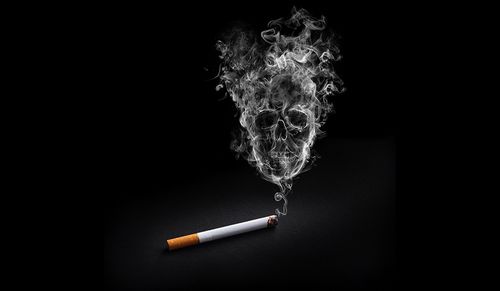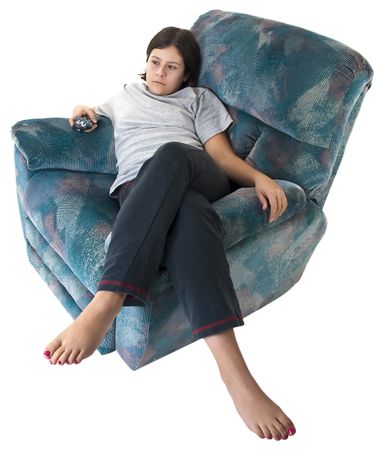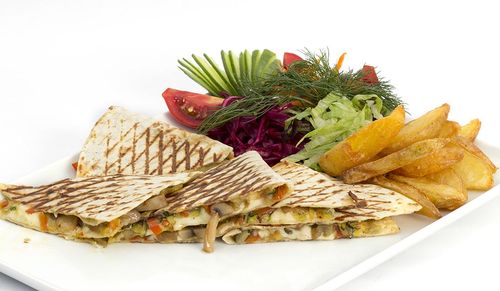Spicing up your food can help you live longer!
According to a US study published in the journal PLOS One, people who eat red chilli peppers have a lower risk of death from all causes compared to those who avoided spicy food.
The study followed 16,179 adults aged 18 or older for up to 23 years. During a median follow-up of 18.9 years, 4,946 participants died.
Participants who consumed hot red chilli peppers had a 13 per cent reduced risk of all-cause mortality, especially deaths from heart disease and stroke.
According to the researchers, the positive health benefits of chilli peppers could be attributed to its principal component, capsaicin.
Capsaicin is "believed to play a role in cellular and molecular mechanisms that prevent obesity and modulate coronary blood flow, and also possesses antimicrobial properties that ‘may indirectly affect the host by altering the gut microbiota’”.
Gender predictor
Can a woman's blood pressure before pregnancy predict the gender of her child?
According to a study published in the American Journal of Hypertension, a woman’s blood pressure before conception may have an impact on the gender of her future child.
The researchers recruited 1,411 newly married Chinese women. The women’s blood pressure, glucose, and triglycerides were assessed at an average of 26.3 weeks before pregnancy. The women were followed through their pregnancies, and they gave birth to 739 boys and 672 girls.
Women who eventually gave birth to a boy had a higher systolic blood pressure prior to pregnancy. Women who delivered a boy had a mean systolic blood pressure of 106.0mmHg vs 103.3mmHg for a girl.
According to Dr Ravi Retnakaran, an endocrinologist at Mount Sinai Hospital in Toronto, Canada, the finding "suggests that a woman's blood pressure before pregnancy is a previously unrecognised factor that is associated with her likelihood of delivering a boy or a girl. This novel insight may hold implications for both reproductive planning and our understanding of the fundamental mechanisms underlying the sex ratio in humans".

Smoking heart
While smoking increases heart attack risk in people of all ages, those under 50 are particularly at risk.
According to a British study published in the journal Heart, the risk of a heart attack is 8.5 times higher for smokers younger than 50 compared to former smokers and nonsmokers of similar age.
The findings are based on data from 1,727 adults who were treated for a type of heart attack known as STEMI, caused by a complete blockage of one of the heart's major arteries; 48.5 per cent of the patients were current smokers; 27.2 per cent were former smokers; and 24.3 per cent were nonsmokers.
Overall, smokers had a three times greater risk of heart attack than ex- and nonsmokers combined. Current and former smokers were also two times more likely to have had a history of coronary artery disease, and three times more likely to have peripheral artery disease, in which clogged blood vessels restrict blood flow to the legs.
Current smokers tended to be 10-11 years younger when they had their heart attack. Smokers under age 50 had the highest risk; they were almost 8.5 times more likely to have a STEMI heart attack than nonsmokers and ex-smokers.
The risk was five times higher for smokers aged 50-65 and three times higher for smokers over the age of 65.
Younger smokers didn’t seem to have other heart attack risk factors seen in older smokers, such as high blood pressure, high cholesterol and diabetes, suggesting that smoking may be the most important risk factor for heart attack in younger smokers.
“All current smokers must be encouraged into smoking cessation therapy to reduce their risk of acute STEMI, with a focus on the youngest smokers whose increased risk is often unrecognised,” the study authors note.
LASIK trouble
Many patients who undergo LASIK surgery to correct their vision develop new eye problems after the procedure, finds a study published in JAMA Ophthalmology.
The findings were based on two studies that included 574 patients aged 21 to 57 years who had laser eye surgery.
Overall, the participants were dissatisfied with their vision prior to the procedure, and the surgery was able to correct the participants’ vision problems.
But more than 40 per cent of the participants reported experiencing one or more new eye problems such as halos, double images, glares and starbursts after the procedure.
The new problems, however, did not affect their ability to function normally.
“Our findings support the need for adequate counselling about the possibility of developing new symptoms after LASIK surgery,” the study concluded.
Violence is contagious
Violence can spread like a contagious disease among teens.
But the spread of violence is not just limited to close friends; it can extend by up to four degrees of separation, meaning from one person to a friend, to the friend’s friend and two more friends beyond.
“Acts of violence can ricochet through a community, travelling through networks of friend,” noted the lead researcher of the study published in the American Journal of Public Health.
The researchers analysed data from 5,913 students aged 12 to 18 at 142 US schools.
The students were 48 per cent more likely to have been in a serious fight, 183 per cent more likely to have hurt someone badly, and 140 per cent more likely to have pulled a weapon on someone if a friend had engaged in the same behaviour.
The study highlights the importance of anti-violence programmes.
Did You Know
If you are genetically at high risk for coronary artery disease, following a healthy lifestyle can help lower your risk by nearly 50 per cent—not smoking can cut your heart attack risk by 44 per cent, maintaining a healthy weight can reduce it by 33 per cent, regular exercise by 16 per cent, and a healthy diet by 9 per cent.
New England Journal of Medicine

Sit and age
Spending too much time sitting can age you faster.
According to a study published in the American Journal of Epidemiology, women who sit for more than 10 hours a day and get very little exercise have cells that are biologically older by eight years than their actual age.
For the study, 1,481 women, aged 64 to 95, answered questionnaires and wore accelerometers for seven days to track their activity levels.
The researchers compared the women’s activity levels and the length of their telomeres, tiny caps on the ends of DNA strands that protect chromosomes from deterioration. As we age, telomeres naturally become shorter. But factors such as obesity and smoking can hasten the process. Shorter telomeres have been linked with cardiovascular disease, diabetes and major cancers. Women who sat for more than 10 hours a day and got less than 40 minutes of moderate-to-vigorous physical activity daily had shorter telomeres.
But exercise can counteract the negative effects of too much sitting. Women who exercised for at least 30 minutes a day did not have shorter telomere length even if they were otherwise sedentary.
"Our study found cells age faster with a sedentary lifestyle. Chronological age doesn't always match biological age. Discussions about the benefits of exercise should start when we are young, and physical activity should continue to be part of our daily lives as we get older, even at 80 years old," the lead study author noted.

Gender difference
Does your doctor’s gender make a difference in the care you receive?
According to a Harvard study published in JAMA Internal Medicine, older patients are more likely to survive if they are treated by female doctors.
Hospitalised patients had 4 per cent lower risk of dying prematurely and a 5 per cent lower chance of being readmitted within 30 days of being discharged from the hospital if they were cared for by female physicians.
According to the researchers, if male physicians did as well as their female counterparts, there would be 32,000 fewer deaths each year in the United States, which is comparable to the number of people who die in motor vehicle accidents annually.
The researchers analysed data from more than 1.5 million patients, 65 years or older, who were hospitalised for non-surgical care and treated by general internists.
“The difference in mortality rates surprised us,” said the lead author. “The gender of the physician appears to be particularly significant for the sickest patients. These findings indicate that potential differences in practice patterns between male and female physicians may have important clinical implications.”
Female physicians are, generally, more likely to stick to clinical guidelines and communicate better with their patients.

Bad food
Do you like your toast browned? If yes, you may be exposing yourself to a chemical that could cause cancer, warns the UK Food Standards Agency (FSA).
Acrylamide is produced when starchy food such as potatoes, bread and root vegetables are roasted, baked, fried or grilled at high temperatures (120 degrees C). It is a natural byproduct of the cooking process. The amount of acrylamide produced varies with the duration and temperature of cooking. Cooking for long durations and at high temperatures can produce more acrylamide.
Acrylamide interacts with the DNA and has been shown to increase the risk of cancer in animals. It has the potential to increase cancer risk in humans as well.
Acrylamide is present in processed food such as chips, cakes, biscuits, cereals, coffee (roasted beans) and other food that are cooked at high temperatures.
The FSA has made suggestions to reduce our exposure to acrylamide:
Cook food to a golden yellow colour. The process of browning the food also produces more acrylamide.
Carefully follow the cooking and heating instructions on prepackaged food.
Don’t store raw potatoes in the refrigerator. Store them in a cool, dark place.
Eat a healthy, balanced food to minimise exposure.
Did You Know
Religious and spiritual experiences activate the same brain reward circuits as love, sex, gambling, drugs and music.
Social Neuroscience
Weekend exercise
Can’t fit exercise into your daily routine? Don’t worry. A study published in JAMA Internal Medicine suggests that cramming all your weekly requirements into one or two sessions over the weekend may be just as effective as exercising daily.
To compare the health benefits of daily exercise and weekend exercise, the researchers analysed data from periodic health surveys of 63,591 men and women, aged 40 or older, in England and Scotland. There were 8,802 deaths from all causes, 2,780 deaths from cardiovascular causes and 2,526 from cancer during the study period.
Compared to inactive people, weekend warriors—those who met the recommended amount of 150 minutes of moderate or 75 minutes of vigourous activity in one or two sessions per week—had a 30 per cent lower risk of death from all causes, a 40 per cent reduced risk of death from cardiovascular causes and 18 per cent lower risk of cancer death. In comparison, regular exercisers had a 35 per cent lower all-cause mortality rate, 41 per cent lower cardiovascular death rate and 21 per cent lower cancer death risk.
The study finds that frequency of exercise does not seem to matter.
"The weekend warrior and other physical activity patterns characterised by one or two sessions per week of moderate—or—vigourous-intensity physical activity may be sufficient to reduce risks for all-cause, CVD, and cancer mortality regardless of adherence to prevailing physical activity guidelines,” the study concluded.

Don’t blame the weather
Don’t blame the weather for your aches and pains.
Two Australian studies question the popular belief that symptoms associated with back pain and osteoarthritis can be triggered by changes in weather.
The first study published in the journal Pain Medicine included nearly 1,000 people with low back pain. The second study published in Osteoarthritis Cartilage included 345 people with osteoarthritis of the knee.
The researchers compared their pain reports with the weather. There was no association between back pain and arthritis and weather conditions such as temperature, humidity, air pressure, wind direction or precipitation.
"The belief that pain and inclement weather are linked dates back to Roman times. But our research suggests this belief may be based on the fact that people recall events that confirm their pre-existing views," noted the lead author of the back pain study. "Human beings are very susceptible so it's easy to see why we might only take note of pain on the days when it's cold and rainy outside, but discount the days when they have symptoms but the weather is mild and sunny."
Did You Know
Practising meditation and listening to music can significantly improve subjective memory function and objective cognitive performance in areas such as attention, executive function, and processing speed in patients with early memory loss.
Journal of Alzheimer's Disease

Youthfulness nap
Taking hour-long afternoon naps can help older adults preserve their mental function.
According to a study published in the Journal of the American Geriatrics Society, afternoon naps can help older adults maintain their memory and thinking and decision-making skills.
The study focused on 2,974 Chinese adults aged 65 and older. The participants took tests that assessed their memory, attention and cognitive abilities. They also answered questions about their napping habits.
About 60 per cent of the participants napped after lunch, for about 30 to more than 90 minutes. The majority napped for about 63 minutes. Those who took an hour-long nap after lunch performed better on the mental tests compared to those who did not nap and those who took shorter or longer naps.
On an average, people who did not take hour-long naps showed decreases in their mental ability that were about four to six times greater than in people who took hour-long naps, which is equivalent to a five-year increase in age.
CONTRIBUTOR: SHYLA JOVITHA ABRAHAM






